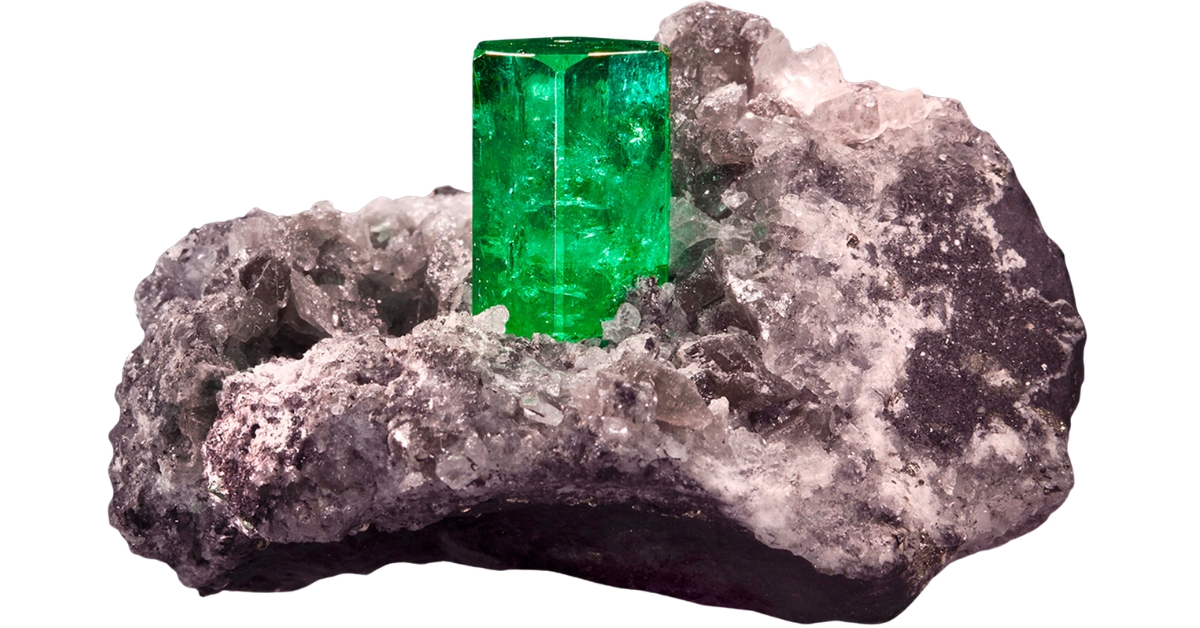Rubies glow with a deep, mesmerizing red, like the first blush of a sunset. They remind us of passion and love. On the other side, emeralds capture the essence of a lush, green forest. They’re like windows to a world of peace and serenity.
You might wonder, with such stunning beauty, how do these two gems stand apart? That’s where the differences between ruby and emerald come into play. Each has its unique charm, properties, and journey to become a dazzling piece of jewelry.
Get ready for an adventure as we peel back the layers to compare ruby vs emerald and understand more about them. We’ll look at what makes a ruby a ruby and an emerald an emerald. Let’s get started!
The Major Differences
When you think of gemstones, ruby and emerald probably are among the first ones that pop into your mind. After all, their individual, unique beauties are a standout.
Despite this shared fame, though, there are actually a handful of differences between ruby and emerald, such as:
Color – Ruby is renowned for its vibrant red color.
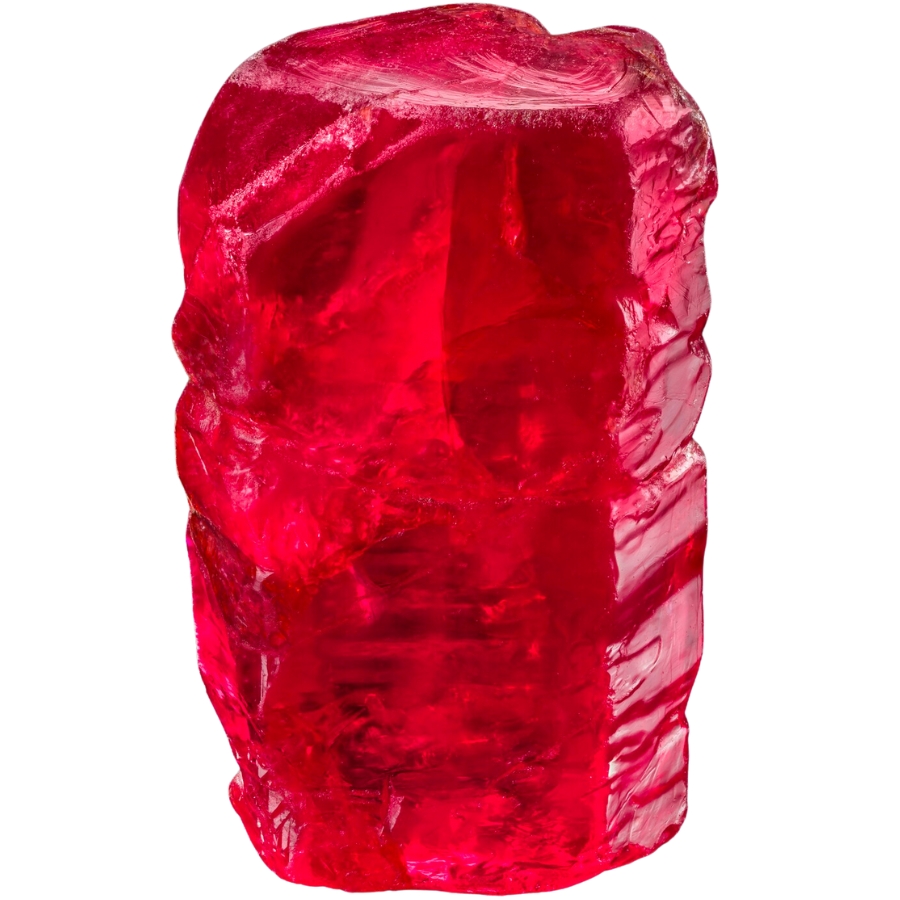
Comparing emerald vs ruby is like comparing grass and fire.
Rubies shine with a bold red that can range from a bright, almost pinkish red to a deep, dark red that reminds us of the heart of a cherry.
The most sought-after rubies have a color that’s so rich and vibrant, people sometimes call it “pigeon’s blood” red.
Emeralds, on the other hand, bring to mind the color of a lush, green forest right after it rains. Their green is deep and soothing, varying from a lighter, more vibrant green to a darker, more mysterious shade.
The most prized emeralds are those with a green so vivid and pure, it feels like you’re gazing into a drop of springtime.
Luster – Emerald has a vitreous luster with more inclusions within it.
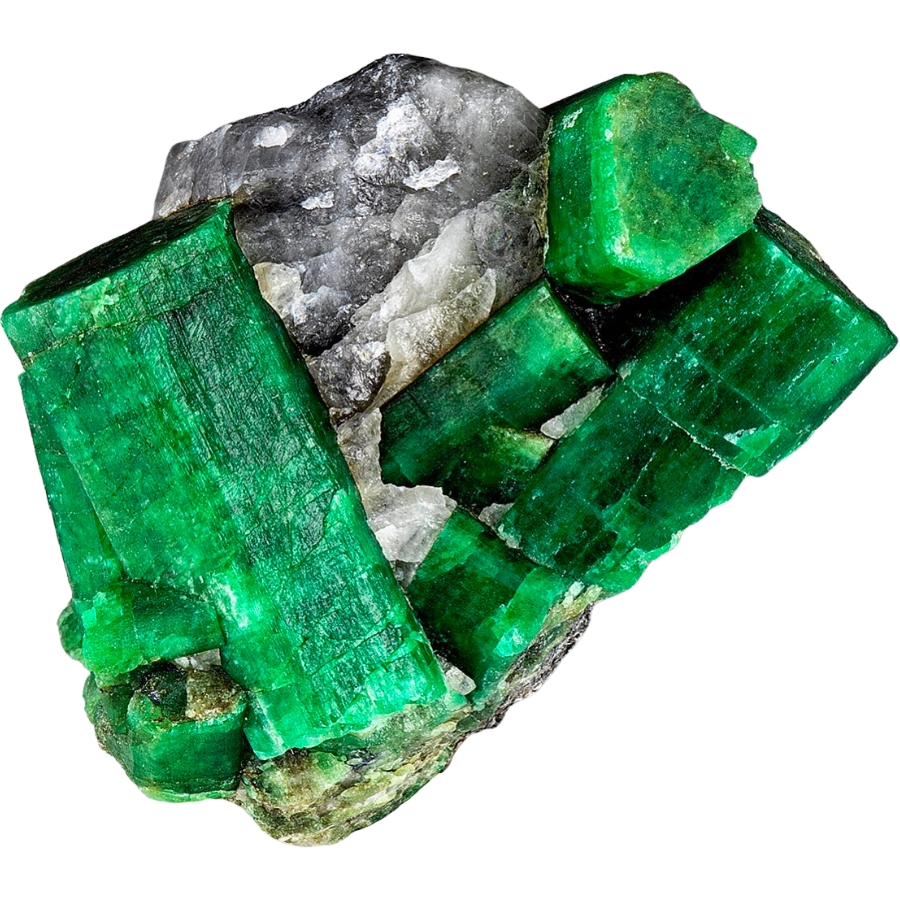
Luster is all about how light plays on the surface of something, making it gleam and glow. Rubies and emeralds both have a vitreous luster. They have a glass-like shine, similar to how a windowpane or a drinking glass sparkles in the sunlight.
But even though they share this kind of luster, the way it shows up can feel a bit different because of how each gemstone is made up.
Rubies have a luster that’s bold and brilliant. Their shine is so strong, it can almost seem like the gem is lit from within. Their clarity plays a big part in their luster.
Emeralds, meanwhile, can sometimes seem a bit softer in their shine. This is because they often have little natural marks called inclusions. These inclusions can scatter light, making the gem’s shine appear more gentle and subdued.
Yet, this doesn’t take away from the beauty of an emerald. In fact, its soft, velvety glow can be just as captivating as the bright sparkle of a ruby.
Crystal Structure – Ruby has a trigonal crystal system.
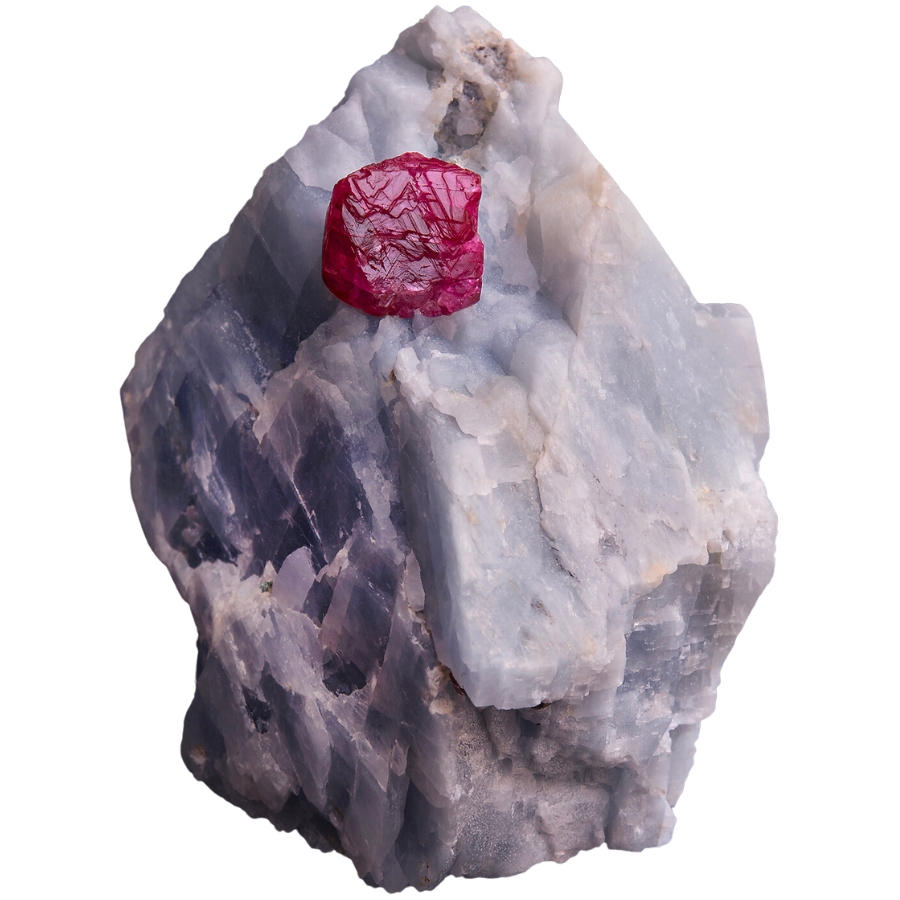
Imagine building a fort out of blocks. The way you stack and arrange those blocks can create different shapes and structures. That’s a bit like how the crystal structure of gems works.
Rubies are like forts built with triangular blocks. They belong to a family with a trigonal crystal system. If you could zoom in super close, you’d see that its atoms are arranged in a pattern that repeats in triangles.
This triangular arrangement makes rubies strong and durable, helping them keep their beautiful shape and shine for a very long time.
Emeralds, on the other hand, have their blocks arranged in a hexagonal pattern, like a honeycomb. They’re part of the hexagonal crystal system. This structure involves atoms that come together in a way that repeats over six sides.
This hexagonal setup is why emeralds often grow in long, column-like crystals that can look like little green towers.
Composition – Emerald’s color is due to chromium and vanadium.
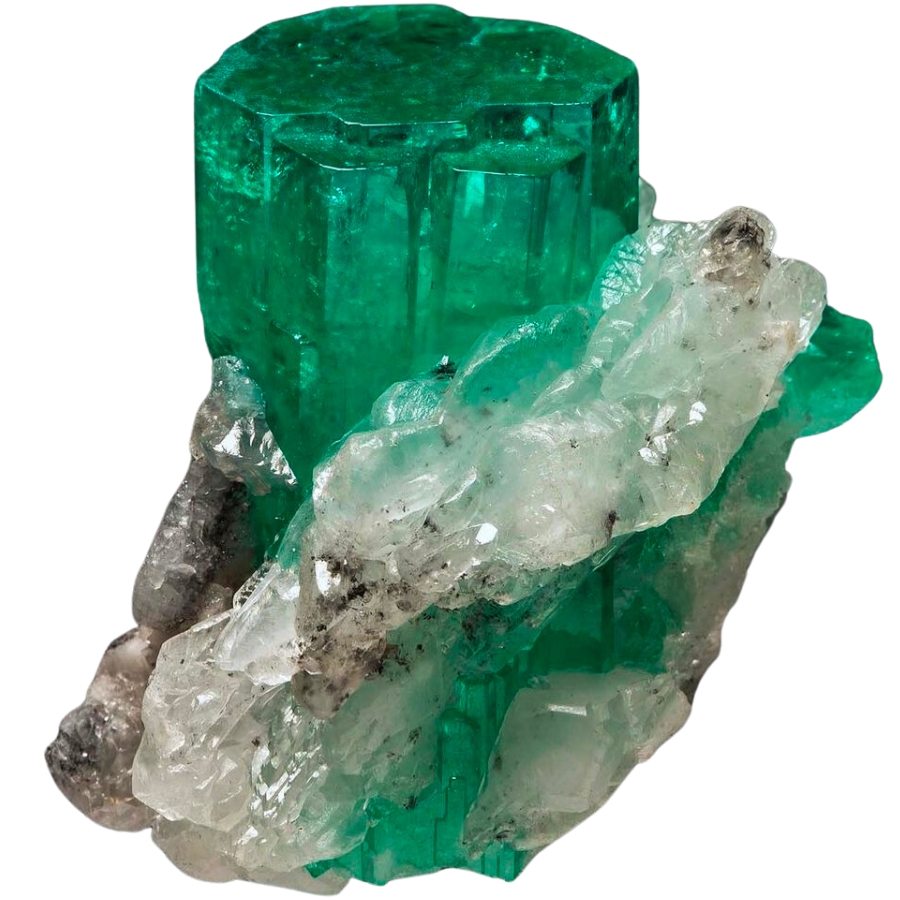
Think of a recipe for your favorite cake. The ingredients you mix make it distinct, right? Gemstones have their own “recipes” too, and their ingredients are different kinds of atoms that come together to make them unique.
Rubies are made mostly from corundum, a very hard mineral made of aluminum and oxygen atoms. But what turns corundum into a stunning red ruby?
Emeralds have a different recipe. Their main ingredient is a mineral called beryl, which is made of beryllium, aluminum, silicon, and oxygen atoms.
But the secret to its lush green color is a mix of chromium and sometimes vanadium. These color the emerald in shades from light to deep green.
Formation – Ruby forms in metamorphic rocks
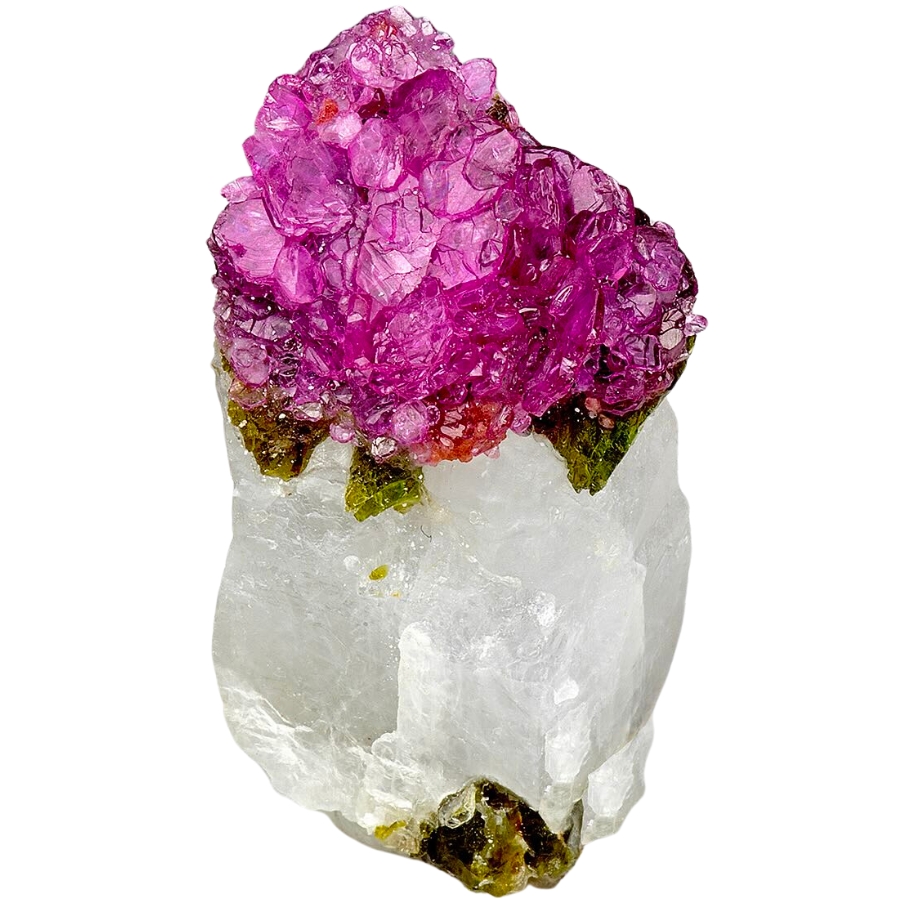
Rubies and emeralds form in totally different “kitchens” under the ground. If they’re cakes, one is baked in an oven and the other is cooked in a slow cooker.
Rubies are like a cake that needs high heat and pressure to bake. They form in places where the Earth’s crust gets really hot and squeezed. This usually happens when mountains are being formed.
The main ingredient of rubies, corundum, finds itself mixed with a little bit of chromium. It’s the heat and pressure that turn this mix into beautiful red rubies.
Emeralds, on the other hand, are more like a slow-cooker recipe. They form in cooler conditions than rubies but still need a lot of heat compared to what we’re used to.
They grow when hot water and minerals from deep in the Earth move through rocks like blackboard chalk or limestone. This hot water brings the ingredients needed to make emeralds.
Density – Emerald is slightly less dense.
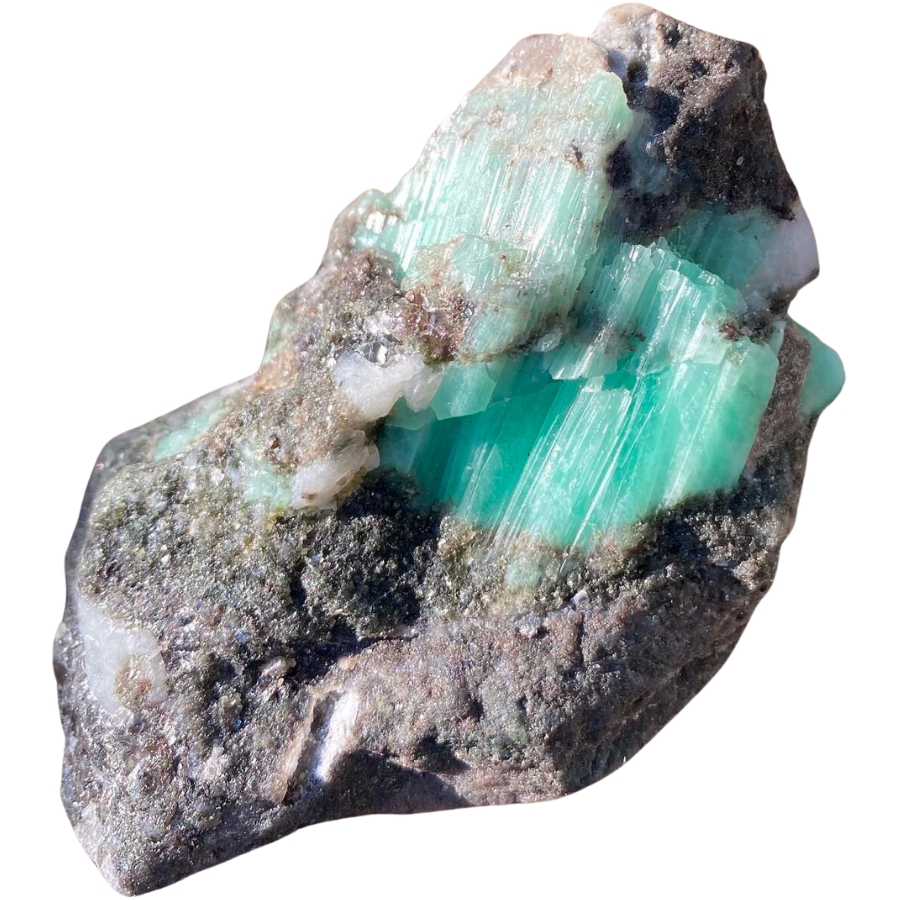
When we talk about density, we’re asking, “How much stuff is packed into a certain space?”
Rubies have a higher density, which means there’s more material packed into every part of this gem. They have a density of about 4.00 grams per cubic centimeter, making them pretty dense.
This is because the atoms that make it up, mainly aluminum and oxygen with a bit of chromium, are arranged in a way that puts a lot of mass into a small space.
Emeralds, on the other hand, have a lower density compared to rubies. This is because the atoms in it, which include beryllium, aluminum, silicon, and oxygen, along with chromium or vanadium for color, are spread out a bit more.
They have a density of around 2.76 grams per cubic centimeter. So, even if you had a ruby and an emerald that were exactly the same size, the ruby would feel heavier.
Hardness – Ruby is the second hardest natural gem.
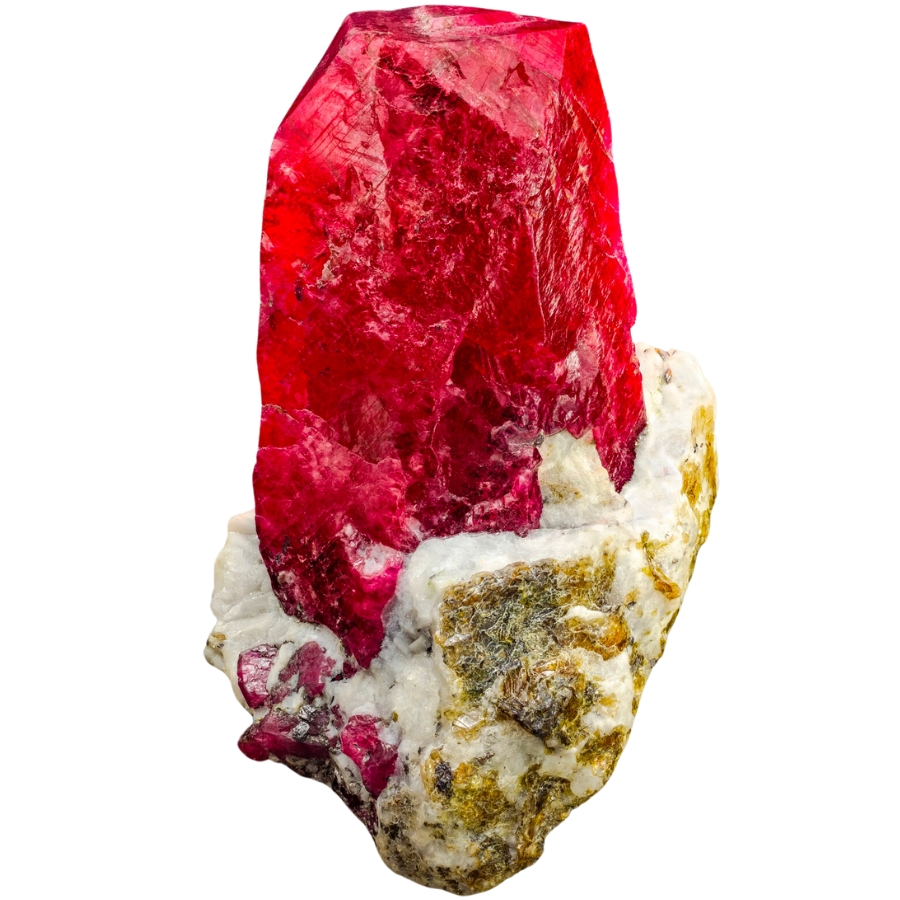
Hardness is about how well a gemstone can scratch something or avoid being scratched itself.
Rubies have a hardness of 9 on the Mohs scale of hardness, which is a way of measuring how hard different materials are. This scale goes from 1 to 10, with 10 being the hardest.
Being a 9 means it’s super strong and can scratch almost anything else. Only a diamond, which is a 10, can scratch it. This makes ruby great for all kinds of jewelry.
Emeralds are still pretty tough, but they’re not as strong as rubies. They have a hardness of about 7.5 to 8 on the Mohs scale. They’re still hard enough to be used in jewelry, but they need a bit more care to keep them from getting scratched.
If you had both of these gems, the ruby could scratch the emerald, but the emerald couldn’t scratch the ruby. So, people who wear emerald jewelry might need to be a little more careful not to bump it into things.
Cleavage – Emerald has a basal cleavage.
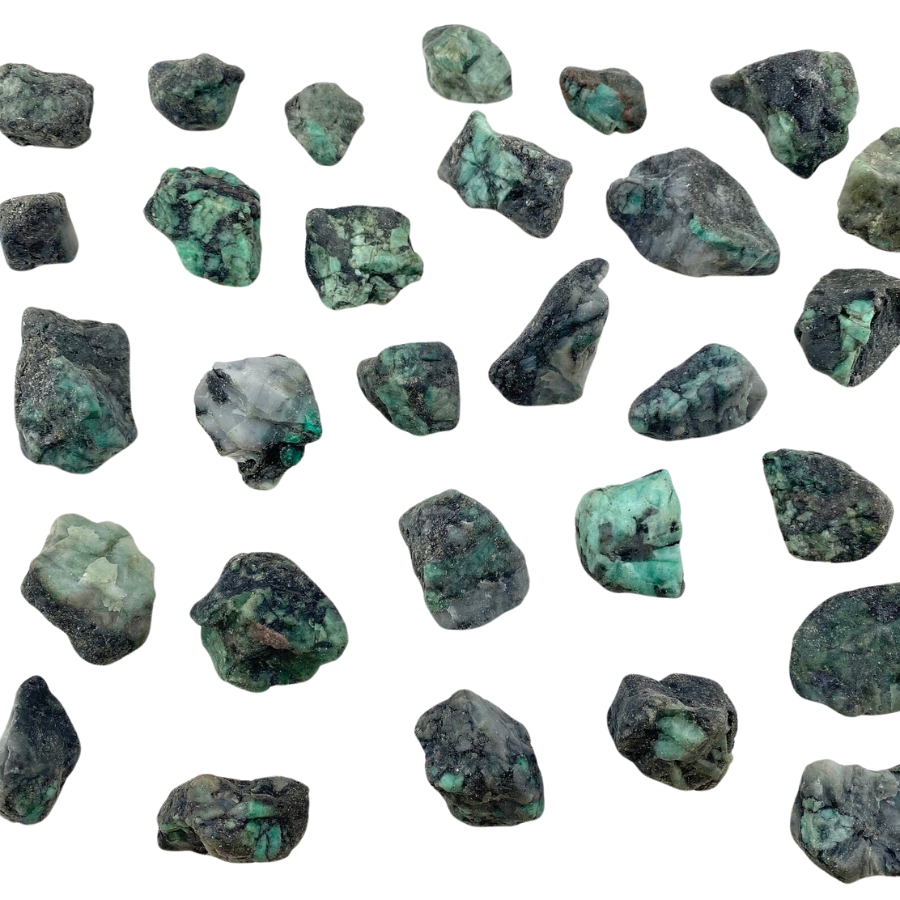
Cleavage is all about how a gemstone breaks. It tells us if a gemstone will break along neat, flat surfaces or if it doesn’t have a specific way it likes to break.
Rubies don’t have cleavage, which means they don’t naturally break along flat, smooth lines. If you tried to break it, it would just fracture or break apart in a more random, uneven way.
This makes rubies more durable and less likely to split apart when they’re being cut and polished into beautiful gemstones for jewelry.
Emeralds, on the other hand, have basal cleavage. They do have a preferred way to break, which is along one flat plane. If too much pressure is put on it in just the right (or wrong) spot, it could split along that plane.
This is why people who cut, polish, and set emeralds into jewelry have to be extra careful to keep them looking perfect.
Magnetism – Ruby can exhibit slight magnetism.
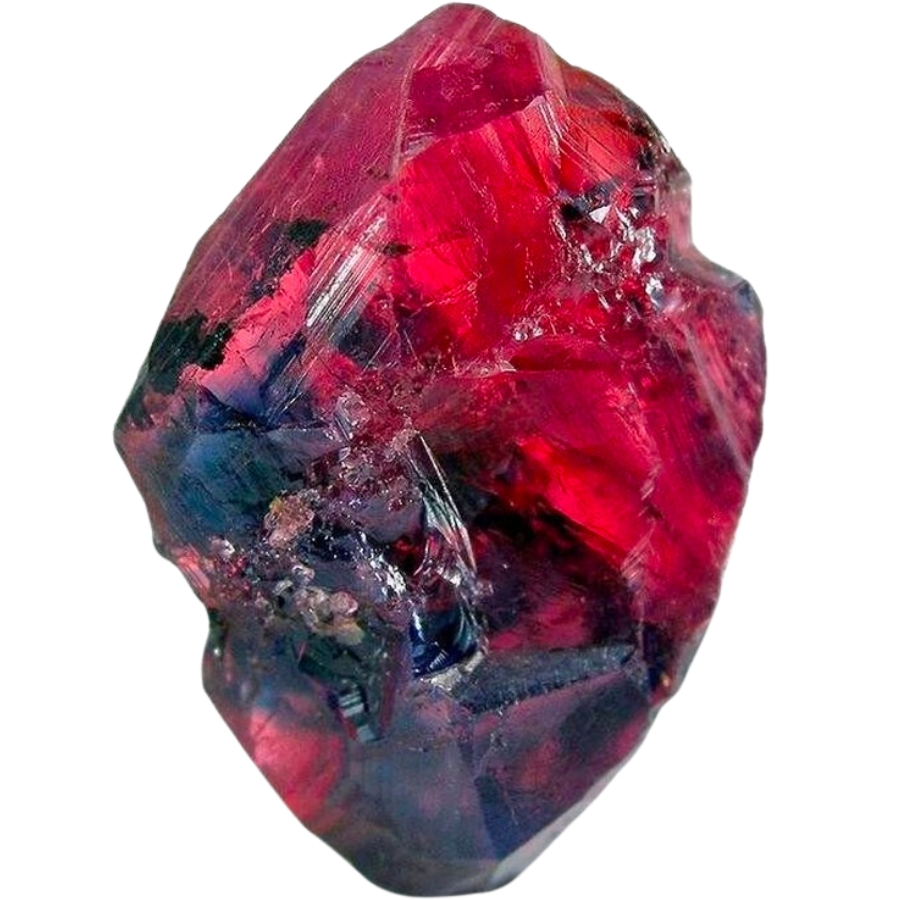
Did you know that some gemstones can be a tiny bit magnetic? This cool feature depends on what’s inside it, like tiny bits of metal that might be hanging out in there.
Earlier, we said that rubies get their beautiful red color from chromium. But sometimes, they can also have a little bit of iron in them. Iron is heavily magnetic.
So, if a ruby has enough iron inside, it might be slightly magnetic. But this doesn’t mean it’ll stick to your fridge! It’s a very, very slight magnetism that you’d probably need special tools to notice.
Emeralds are a bit different. They’re mostly made of beryllium, aluminum, silicon, and oxygen, with some chromium or vanadium to give them their green color. These materials aren’t really known for being magnetic.
Fluorescence – Emerald does not fluoresce as strongly.
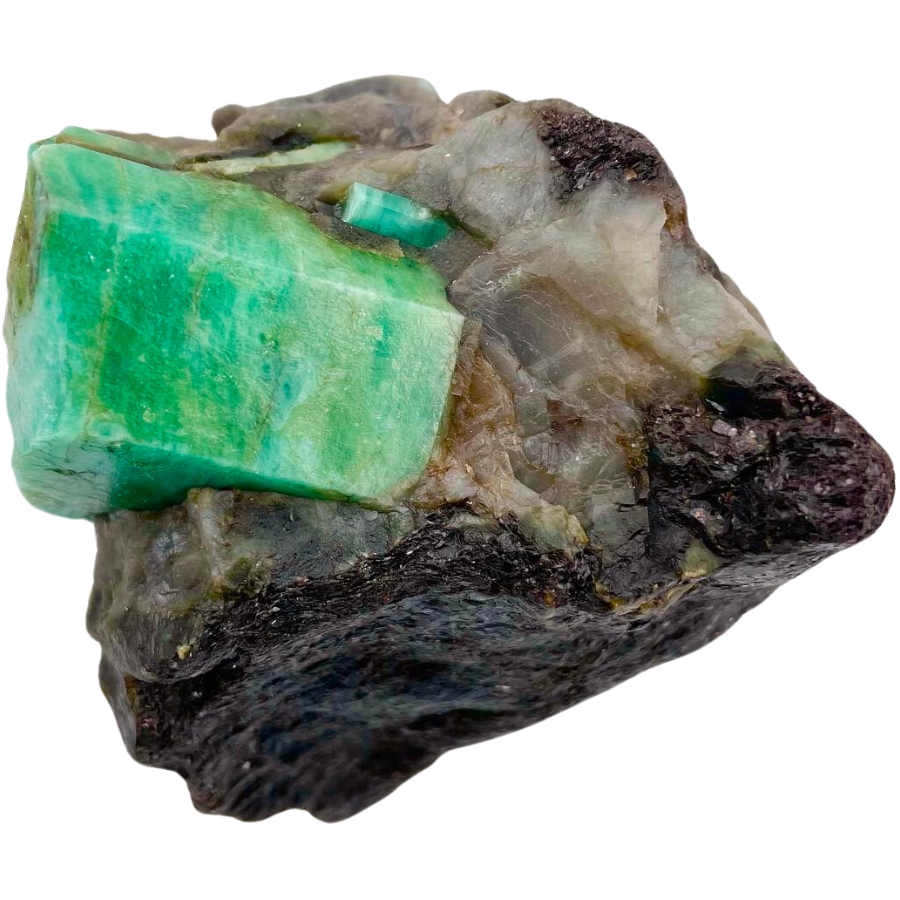
Have you ever seen something glow under a black light? Some gemstones can do that too, thanks to fluorescence. This is when a gem absorbs light that we can’t see and then gives off light that we can see, making it look like it’s glowing.
Rubies are like the stars of the fluorescence world. Many of them can glow a bright red under ultraviolet (UV) light, which is the kind of light in black lights. This comes from the chromium inside them.
This glow can make a ruby’s color look even more intense and beautiful, especially in sunlight, which has UV light in it.
Emeralds, on the other hand, are a bit more shy about glowing. Some can show a bit of fluorescence, but it’s usually not as strong as what you see in rubies.
If they do glow, it might be a soft red or sometimes green, depending on what’s inside the emerald. But a lot of emeralds don’t glow much at all.
Location – Ruby is found in marble and basalt environments.
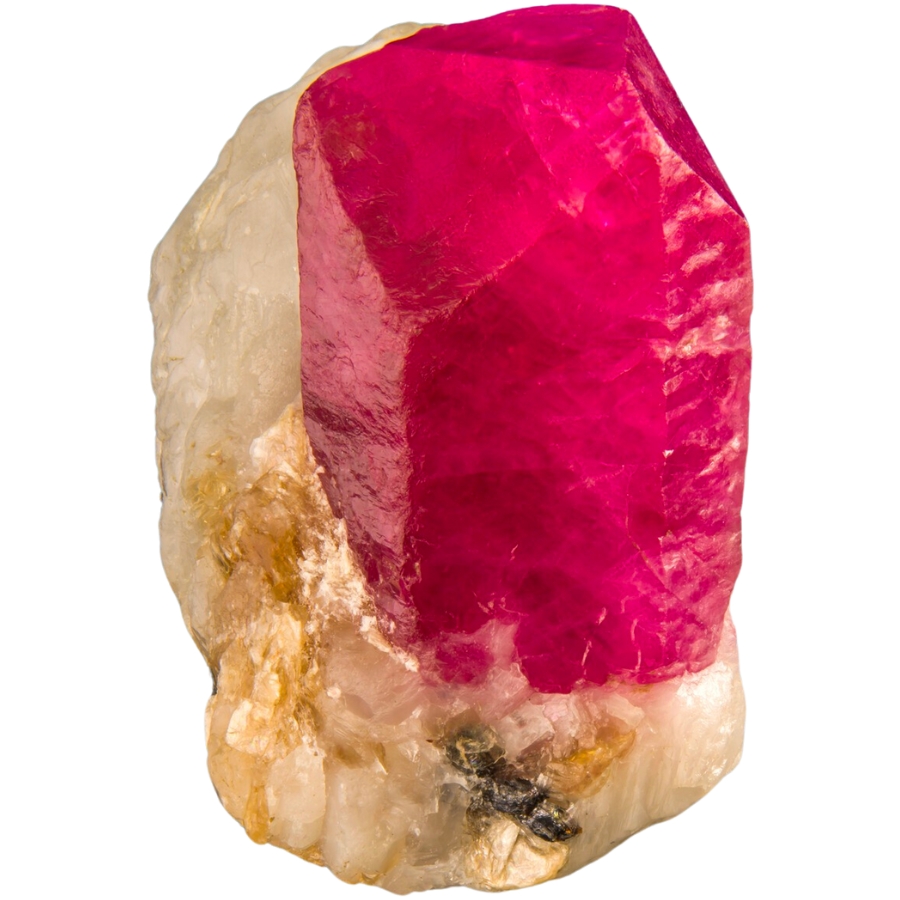
If you’re dreaming about going on a treasure hunt to find ruby near you or exploring the best places to find emerald, you’re in for an adventure. These two gems like to hang out in different spots.
Rubies are often found in places where the land has been squeezed and heated. This happens in countries like Myanmar, which is famous for some of the most beautiful rubies in the world.
Other hotspots for ruby include parts of Thailand, Vietnam, and even some areas in the USA, like Montana.
On the flip side, emeralds take you on a journey to spots where the Earth’s been brewing up minerals in hot, watery solutions. Colombia is a superstar when it comes to emeralds, offering some of the most stunning green gems you’ll ever see.
But that’s not the only place. You could also find emeralds in Brazil, Zambia, and even some parts of the USA, like North Carolina.
Price – Emerald can be more affordable.
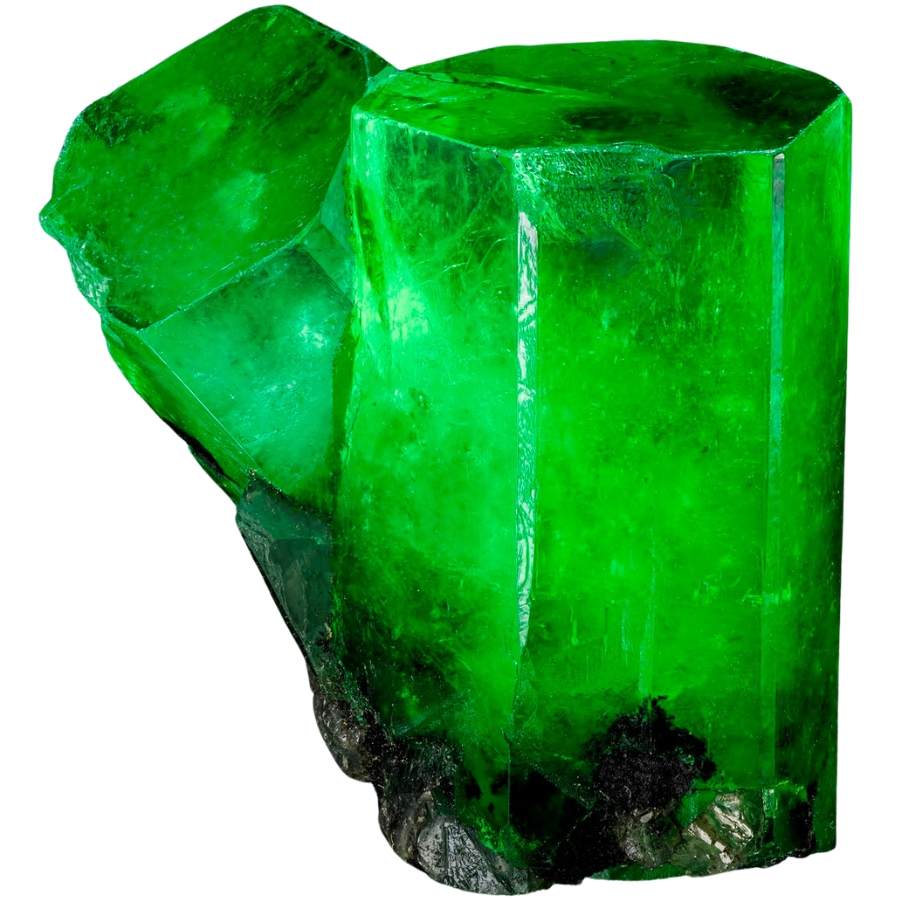
Both ruby and emerald are popular and loved by many, but their prices can be as different as their colors.
The price of ruby can get really high, especially for those that are super clear and have that perfect deep red color, sometimes called “pigeon’s blood” red. The more vivid and clear the red, the higher the price can go.
Rubies are pretty rare which makes them more expensive. If it comes from a famous place like Myanmar and doesn’t have many scratches or marks inside, it could cost more than a car! But don’t worry; not all rubies are that pricey.
On the other hand, the value of emerald also varies a lot. Those with a bright, clear green color without a lot of marks inside are super valuable. Colombia is known for these beautiful specimens, and they can be pretty pricey, too.
But just like rubies, not all emeralds will make your wallet cry. Sometimes they have inclusions, which can lower the price a bit but also show that the gem is real.
The Similarities
Ruby and emerald may be as different as fire and grass in many aspects, but, surprisingly, they share a few similarities. These are:
Streak – Ruby and emerald both leave white streaks.
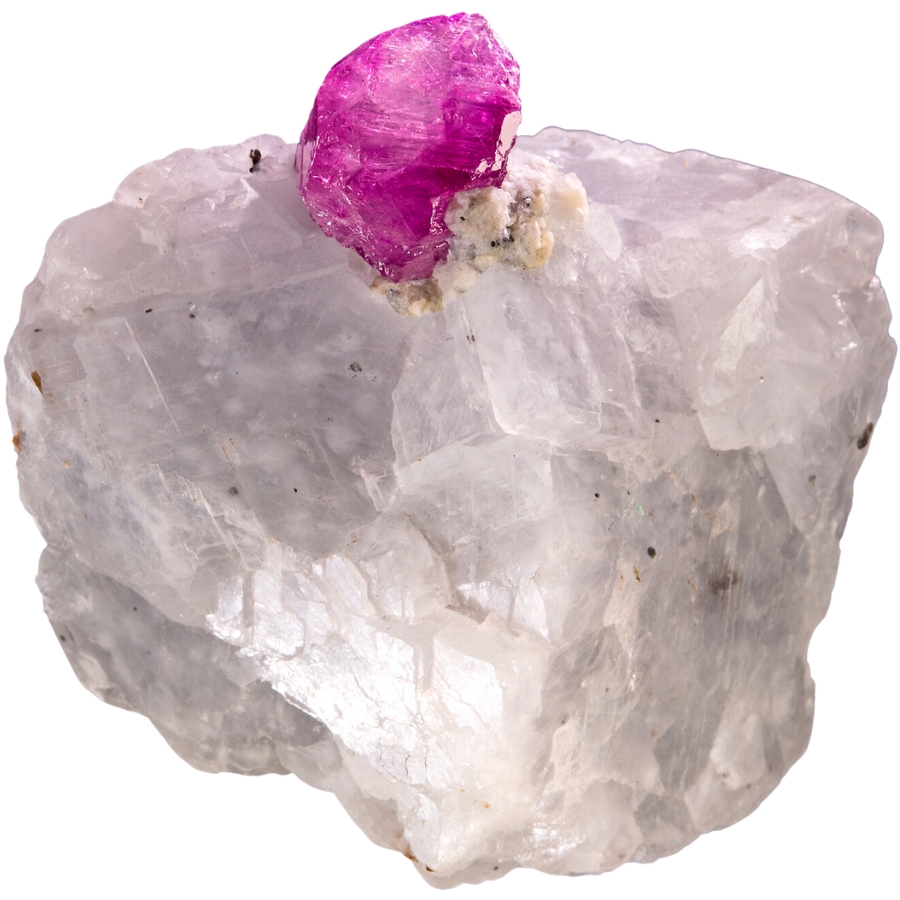
When you hear the word “streak,” you might think of racing or maybe even drawing with markers. But in the world of gemstones, the streak is all about what color mark it leaves behind when it’s rubbed across a special plate.
And here’s a fun fact: both rubies and emeralds leave behind the same color streak, which is white. No matter how different they look on the outside, they share this trait.
This information is helpful for folks who are curious about gemstones or even for those who make jewelry. The streak test is a quick and easy way to help figure out what kind of gemstone you’re looking at.
Since lots of gemstones can be all sorts of colors, knowing that both ruby and emerald leave a white streak gives you a clue about what they are.
Conductivity – Emerald and ruby are poor conductors.
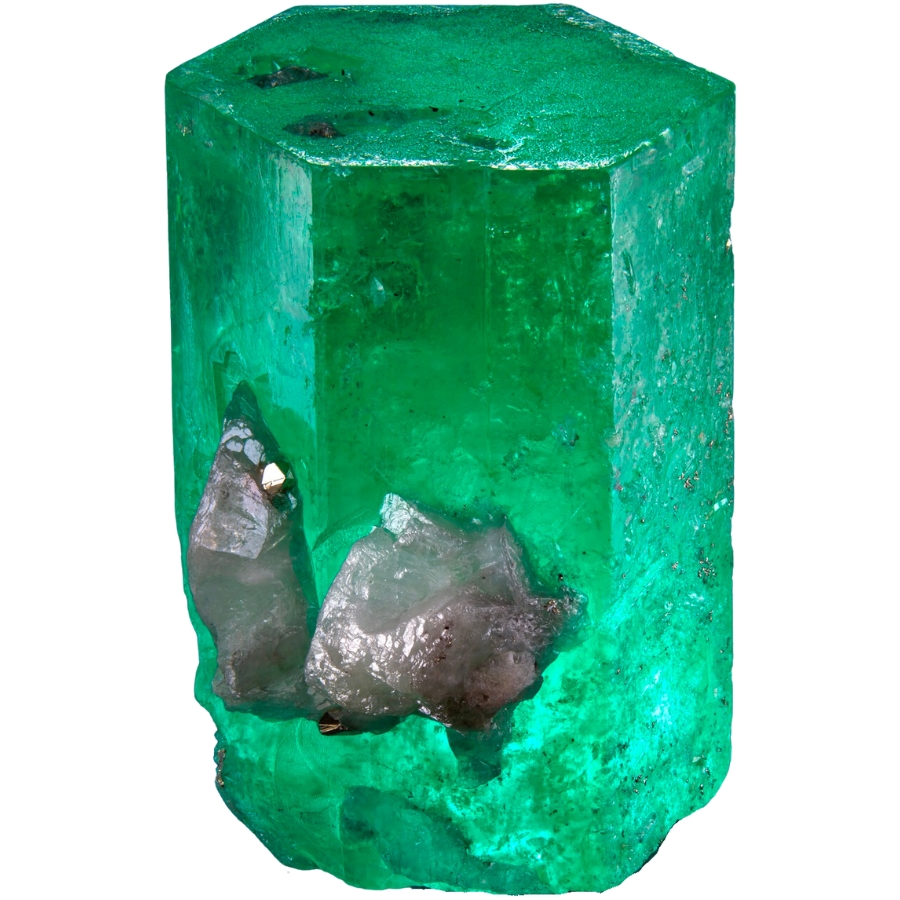
Conductivity is a measure of how well something can pass along electricity. Interestingly, some gemstones possess this property.
But for ruby and emerald, it’s a different story. Both of them are pretty similar in this way— they’re not great at conducting electricity.
This might sound like a small thing, but it’s actually super useful for people who work with these gemstones.
Since rubies and emeralds don’t conduct electricity well, they can be safely used in all kinds of jewelry without worrying about them causing any electric shocks or problems.
This similarity is also handy when testing gemstones to figure out what they are. Since both rubies and emeralds have low conductivity, this trait can help jewelers or gemstone collectors confirm they’re dealing with one of these precious stones.
The Easiest Ways To Tell Them Apart
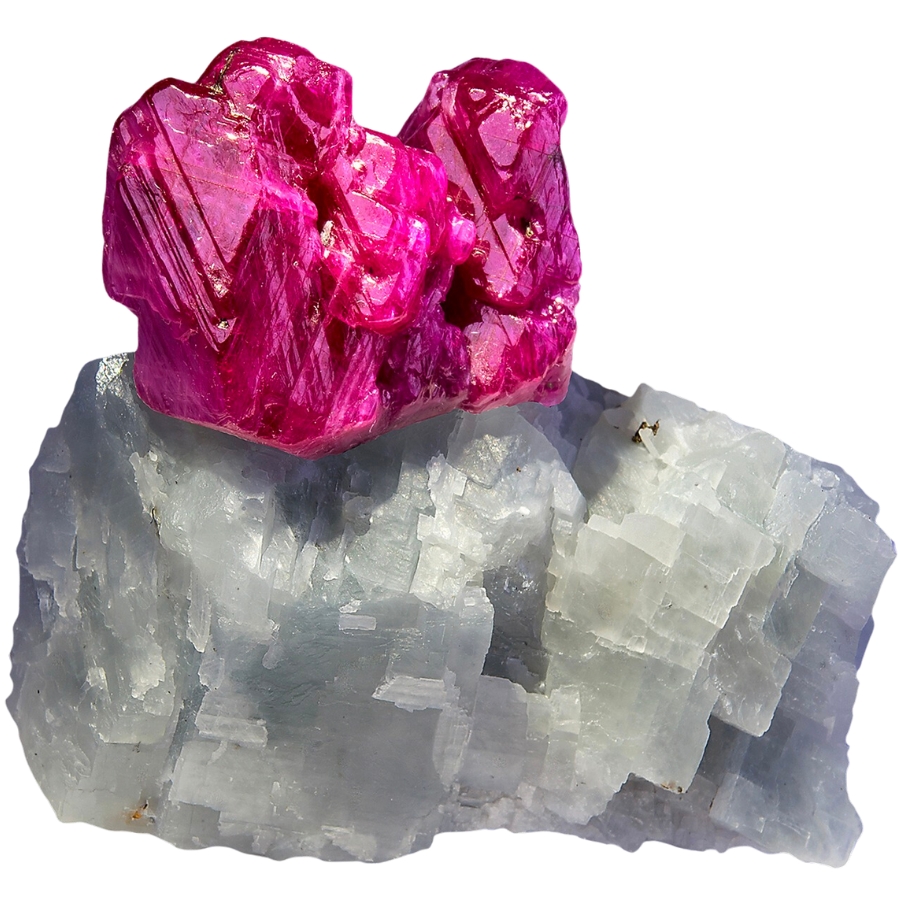
Let’s say you’re out in the field, looking for gemstones, and you find one that you suspect is either a ruby or an emerald, how can you say for sure that it is?
Here are some doable, practical tips that you can do even without any fancy equipment or tools, to determine if what you have is a ruby or emerald.
Look at its color
Color is your best friend when trying to figure out if you’ve got a ruby or an emerald.
Rubies are famous for their stunning red color. It’s like the red you see on a stop sign or a ripe cherry.
On the other hand, emeralds are all about green. They’re the color of a fresh, leafy salad or the trees in a forest.
Test its hardness
Rubies and emeralds are both pretty tough, but rubies have a bit of an edge. They’re almost as hard as diamonds! This means that a ruby can scratch glass super easily.
While emeralds are also hard, they’re not quite as tough as rubies. So, if your gemstone can scratch glass without a problem, it might be a ruby.
But remember, trying to scratch things with your gemstone could damage it, so be careful!
Check for inclusions
Look at the lines and marks inside the gemstone or what we call inclusions. Emeralds often have more of these little lines and marks than rubies.
It’s like emeralds are a book with lots of stories inside, while rubies are more like a clear, open sky. If you see lots of inclusions, you might be holding an emerald.

